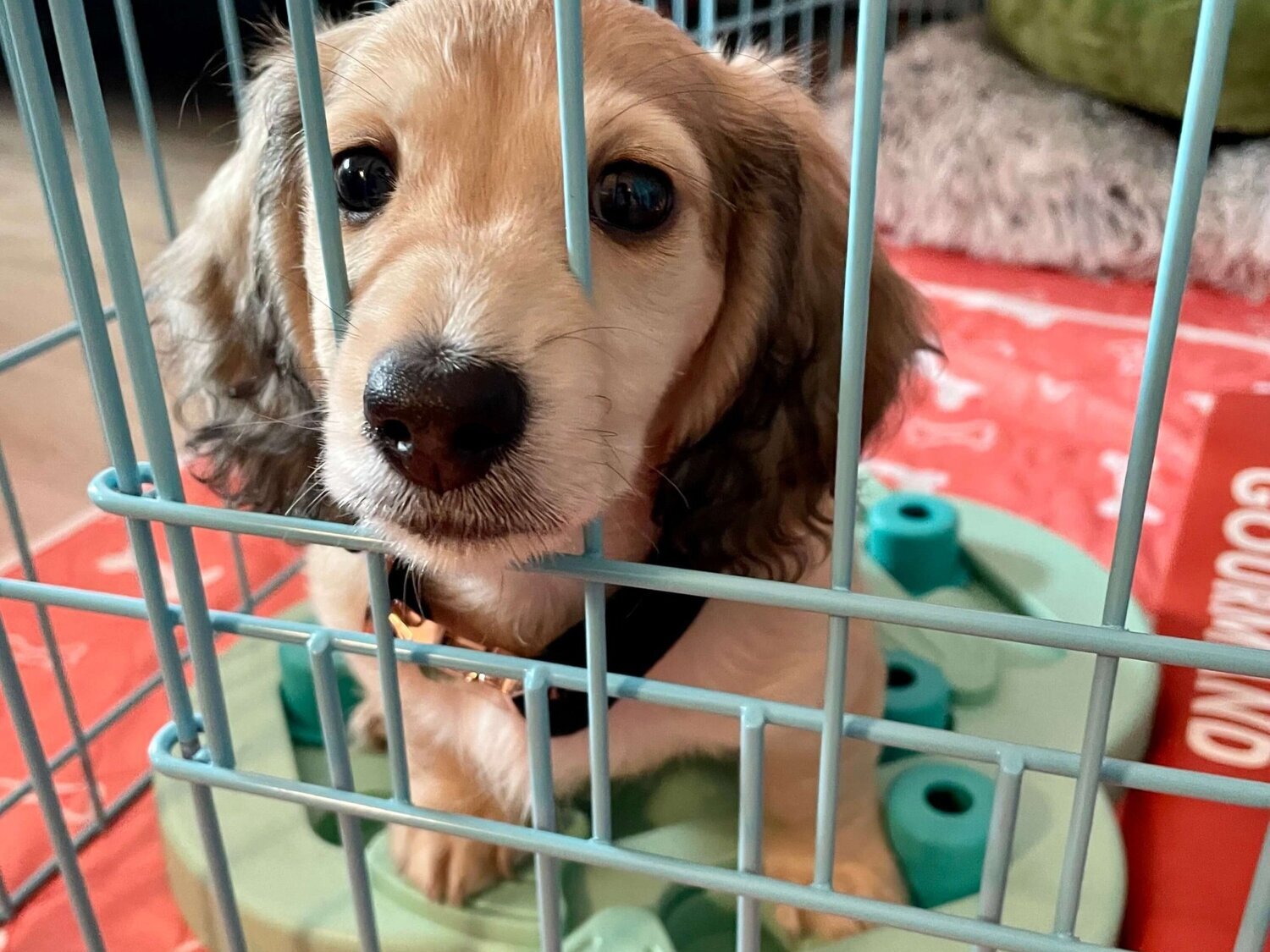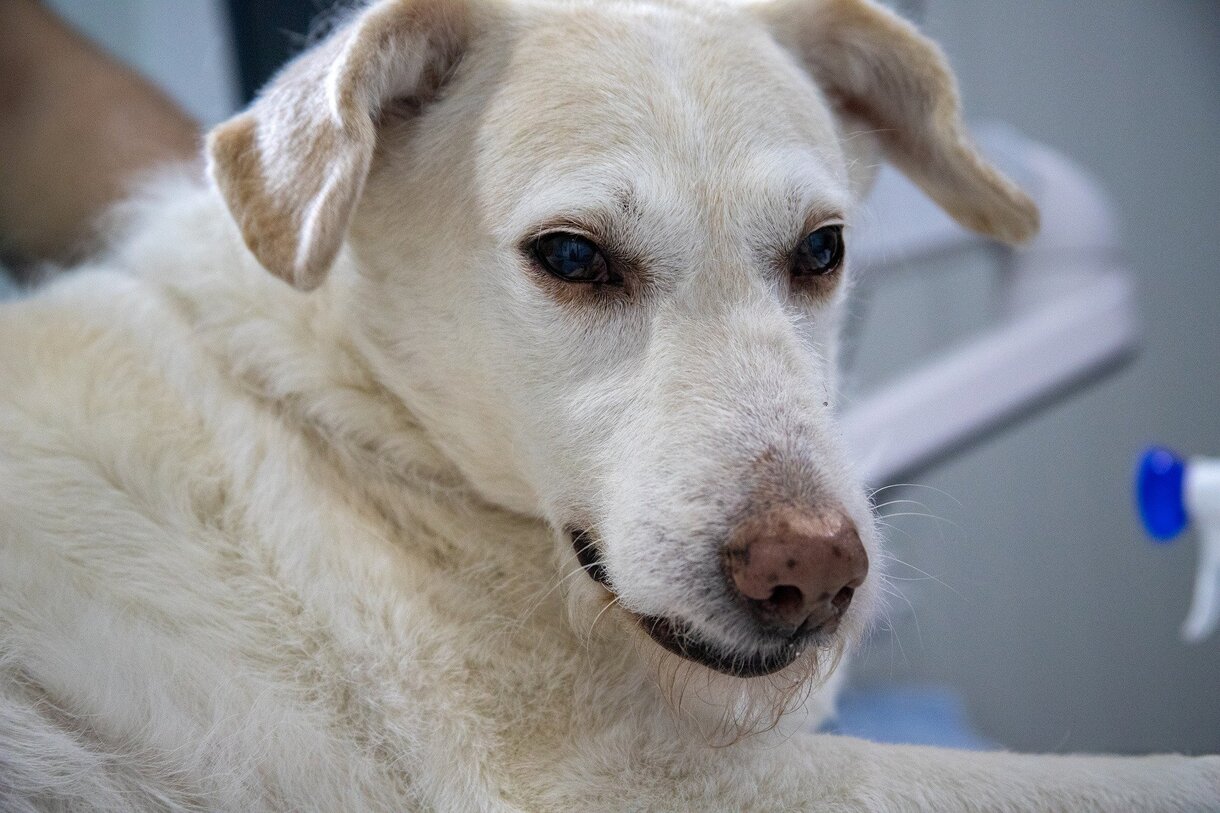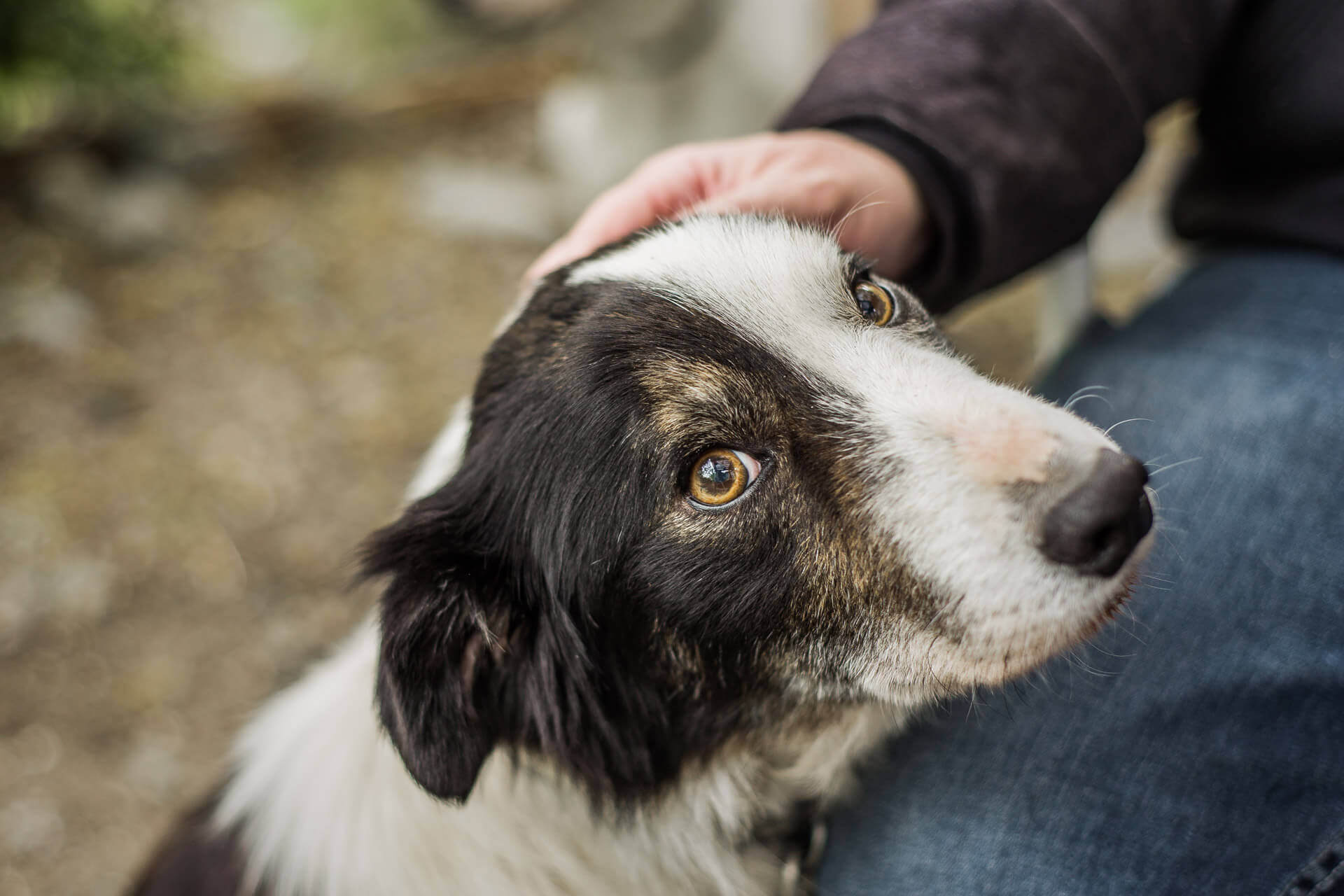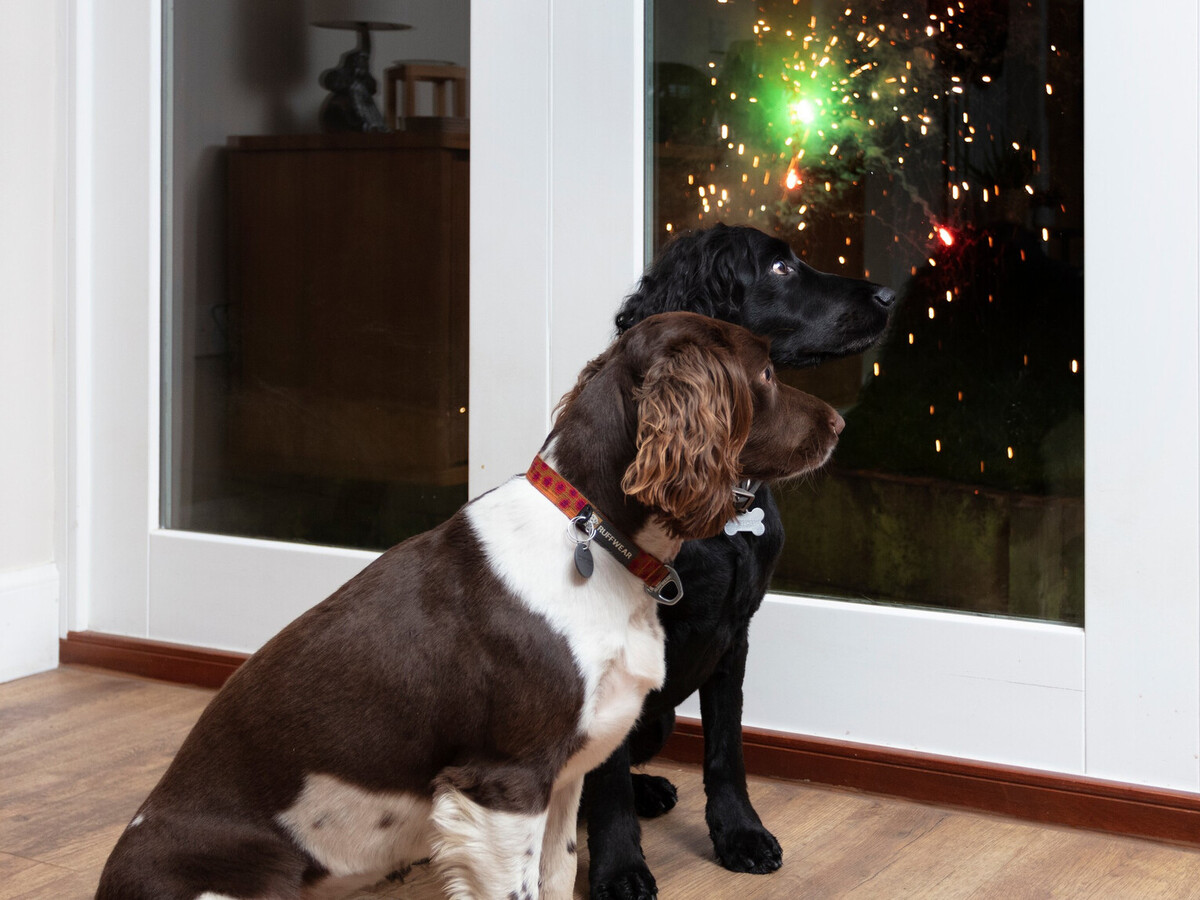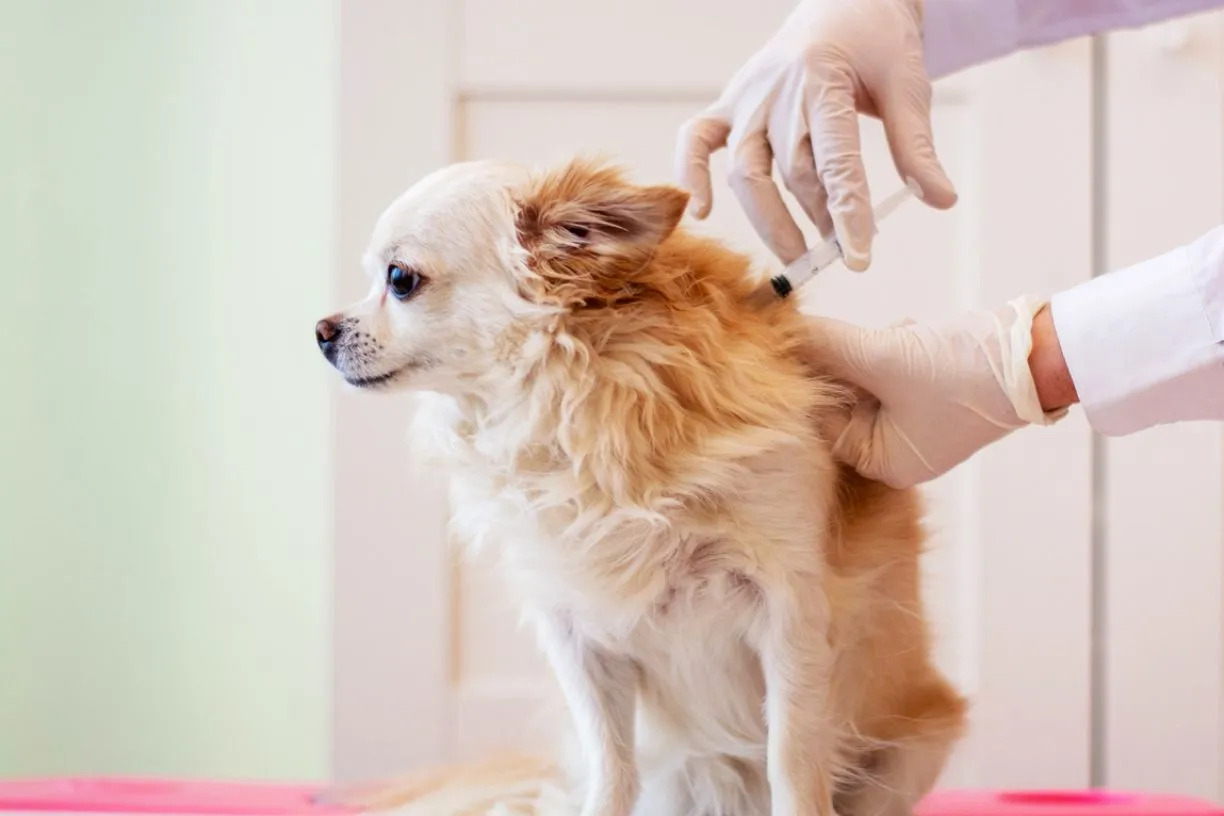Home>Health & Wellness>Common Health Issues>Eye and Ear Health>How To Help With Dry Eye In Dogs
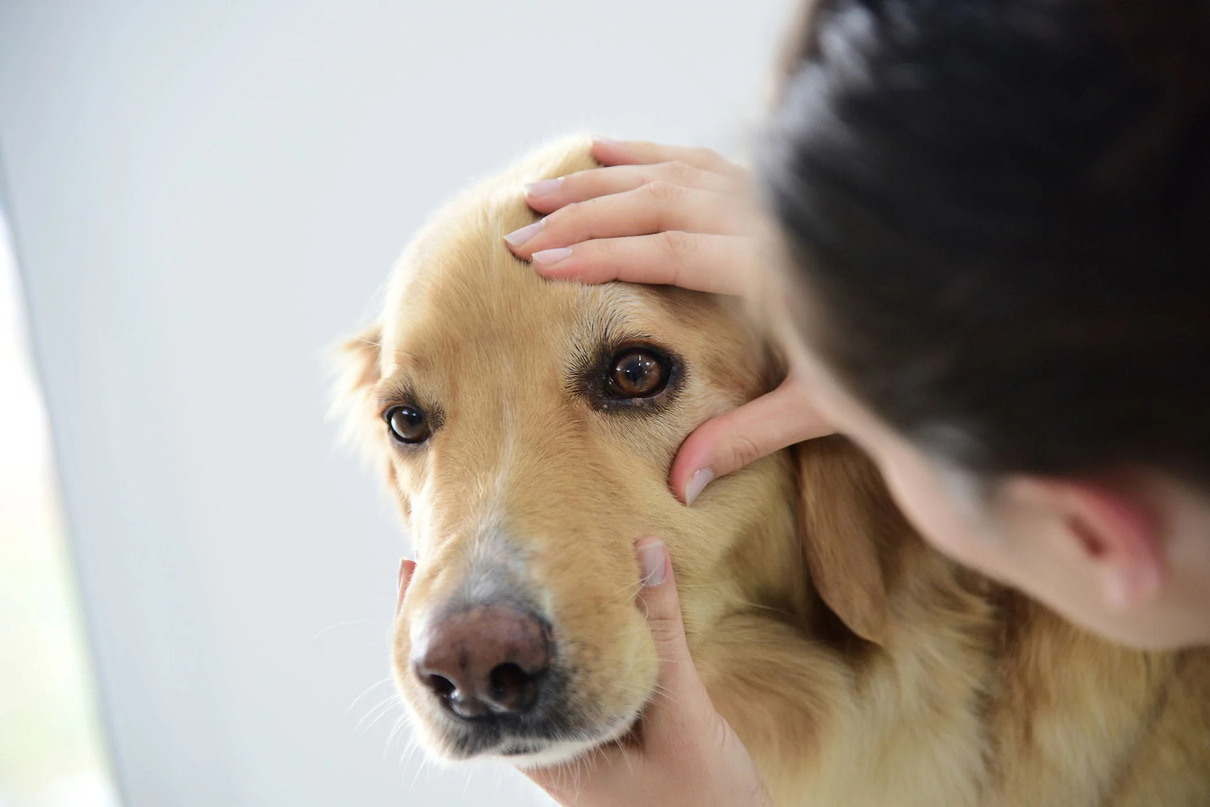

Eye and Ear Health
How To Help With Dry Eye In Dogs
Published: February 12, 2024
Learn effective ways to support your dog's eye and ear health with our expert tips and recommendations for managing dry eye in dogs. Discover helpful solutions for promoting overall eye and ear wellness.
(Many of the links in this article redirect to a specific reviewed product. Your purchase of these products through affiliate links helps to generate commission for Pawsomeoldies.com, at no extra cost. Learn more)
Table of Contents
Introduction
Welcome to our comprehensive guide on understanding and addressing dry eye in dogs. As a loving pet owner, it's essential to be aware of the potential health issues that can affect your furry friend. Dry eye, also known as keratoconjunctivitis sicca (KCS), is a common condition that can cause discomfort and potential complications for dogs. In this article, we will delve into the symptoms, causes, diagnosis, treatment options, home remedies, and preventive measures for dry eye in dogs.
Understanding the nuances of dry eye in dogs is crucial for providing the best possible care for your canine companion. By gaining insight into this condition, you can take proactive steps to ensure your dog's ocular health and overall well-being. Let's embark on this journey to explore the intricacies of dry eye in dogs and discover effective ways to alleviate its symptoms and prevent future occurrences.
Read more: How To Help Dogs With Anxiety At Night
Understanding Dry Eye in Dogs
Dry eye, or keratoconjunctivitis sicca (KCS), is a prevalent condition that affects dogs of all breeds and ages. It occurs when there is a deficiency in the production of tears or when the quality of tears is compromised. Tears play a crucial role in maintaining the health of the eyes by providing lubrication, nourishment, and protection against foreign particles and infections. When a dog experiences dry eye, the lack of adequate tear production can lead to discomfort, inflammation, and potential damage to the cornea.
The tear film consists of three essential components: water, mucus, and oil. Each component serves a specific purpose in keeping the eyes moist and maintaining clear vision. Water forms the majority of the tear film and hydrates the cornea, while mucus helps in spreading the tears evenly over the surface of the eye. Oil, produced by the meibomian glands, prevents the evaporation of tears and maintains their stability.
In the case of dry eye, the imbalance in tear composition can result in a range of symptoms, including redness, irritation, excessive blinking, and a thick, yellowish discharge from the eyes. Additionally, dogs with dry eye may experience sensitivity to light, squinting, and a reluctance to keep their eyes open for extended periods.
It's important to note that dry eye can lead to more severe complications if left untreated. The lack of adequate lubrication can cause the cornea to become dry and inflamed, leading to a condition known as keratitis. Over time, this can result in corneal ulcers, which are not only painful for the dog but can also impair their vision.
Understanding the impact of dry eye on a dog's ocular health is crucial for early detection and intervention. By recognizing the signs and symptoms of dry eye, pet owners can seek prompt veterinary care to alleviate discomfort and prevent potential complications. In the following sections, we will explore the symptoms, causes, diagnosis, treatment options, home remedies, and preventive measures for dry eye in dogs, providing comprehensive insights to support the well-being of our beloved canine companions.
Symptoms of Dry Eye in Dogs
Recognizing the symptoms of dry eye in dogs is crucial for early intervention and effective management of this condition. Dogs affected by dry eye may exhibit a range of noticeable signs that indicate ocular discomfort and potential complications. Understanding these symptoms can empower pet owners to seek timely veterinary care and provide the necessary support for their canine companions.
-
Excessive Blinking and Squinting: Dogs with dry eye often display increased blinking and squinting as a response to ocular irritation and discomfort. These repetitive actions serve as indicators of potential eye issues, prompting pet owners to observe their dog's behavior closely.
-
Redness and Irritation: The presence of redness in the eyes, along with visible signs of irritation, can signal the onset of dry eye in dogs. The conjunctiva, the thin membrane covering the inner surface of the eyelids and the white part of the eye, may appear inflamed, indicating the need for further evaluation.
-
Thick, Yellowish Discharge: A noticeable discharge from the eyes, particularly if it is thick and yellowish in color, can be a prominent symptom of dry eye. This discharge may accumulate in the corners of the eyes and require regular cleaning to prevent discomfort and potential complications.
-
Sensitivity to Light: Dogs experiencing dry eye may demonstrate heightened sensitivity to light, leading to increased blinking, squinting, or avoidance of well-lit areas. This sensitivity can contribute to their overall discomfort and impact their daily activities.
-
Reluctance to Keep Eyes Open: Due to the discomfort associated with dry eye, dogs may exhibit a reluctance to keep their eyes open for extended periods. This behavior can manifest as frequent blinking, partial closure of the eyelids, or a preference for dimly lit environments.
-
Corneal Changes: In advanced cases of dry eye, changes in the appearance of the cornea may become evident. These changes can include cloudiness, ulceration, or a lack of luster in the surface of the eye, indicating the need for immediate veterinary attention.
By being attentive to these symptoms, pet owners can promptly seek veterinary care and facilitate the diagnosis and management of dry eye in their dogs. Early recognition of these signs can lead to effective treatment and improved ocular health for canine companions.
Understanding the symptoms of dry eye in dogs is a vital aspect of responsible pet ownership, enabling proactive measures to address ocular discomfort and support the overall well-being of beloved pets.
Causes of Dry Eye in Dogs
Dry eye in dogs can be attributed to a variety of underlying causes, each contributing to the disruption of normal tear production and the overall health of the ocular surface. Understanding these causes is essential for identifying potential risk factors and addressing the root of the condition. Here are the primary factors that can lead to dry eye in dogs:
-
Autoimmune Disorders: One of the most common causes of dry eye in dogs is an autoimmune condition known as immune-mediated dacryoadenitis. This condition involves the immune system mistakenly attacking the lacrimal glands, which are responsible for tear production. As a result, the lacrimal glands become inflamed and may experience damage, leading to a reduction in tear production and the onset of dry eye.
-
Genetic Predisposition: Certain dog breeds are more susceptible to developing dry eye due to genetic predispositions. Breeds such as Cocker Spaniels, Bulldogs, Lhasa Apsos, and Shih Tzus are known to have a higher incidence of dry eye. Genetic factors can influence the structure and function of the lacrimal glands, potentially leading to inadequate tear production and the manifestation of dry eye symptoms.
-
Infections and Inflammation: Infections or inflammatory conditions affecting the ocular surface and surrounding structures can disrupt the normal functioning of the lacrimal glands and tear film. Conditions such as canine distemper virus, bacterial or fungal eye infections, and chronic inflammation of the conjunctiva can impact tear production and contribute to the development of dry eye in dogs.
-
Trauma or Injury: Physical trauma or injury to the eyes can result in damage to the lacrimal glands or the structures responsible for tear production and distribution. In cases of severe trauma, the tear-producing mechanisms may be compromised, leading to a reduction in tear quantity and quality, ultimately culminating in dry eye.
-
Medications and Medical Treatments: Certain medications, particularly those with anticholinergic properties, can interfere with tear production in dogs. Additionally, medical treatments such as radiation therapy or surgical procedures involving the eyes or surrounding areas can disrupt the normal function of the lacrimal glands, potentially leading to dry eye as a secondary consequence.
-
Age-Related Changes: As dogs age, the efficiency of the lacrimal glands and the overall tear production process may diminish. Age-related changes can contribute to a gradual decline in tear quantity and quality, predisposing older dogs to the development of dry eye.
By recognizing these underlying causes, pet owners and veterinary professionals can work collaboratively to identify risk factors, implement preventive measures, and develop targeted treatment strategies to address dry eye in dogs effectively. Understanding the multifaceted nature of these causes is pivotal in promoting the ocular health and well-being of canine companions.
Diagnosing Dry Eye in Dogs
Diagnosing dry eye in dogs involves a comprehensive assessment of ocular health and tear production to accurately identify the presence and severity of this condition. Veterinary professionals utilize a combination of clinical evaluations, specialized tests, and diagnostic procedures to establish a definitive diagnosis and formulate an appropriate treatment plan for affected dogs.
Read more: How To Help Aggressive Anxiety In Dogs
Clinical Evaluation
The initial step in diagnosing dry eye involves a thorough clinical evaluation of the dog's eyes and overall health. Veterinary ophthalmologists or general practitioners may conduct a detailed physical examination to assess the external appearance of the eyes, including signs of redness, discharge, and corneal changes. Additionally, the veterinarian may observe the dog's behavior, such as excessive blinking, squinting, or sensitivity to light, to gather valuable insights into potential ocular discomfort.
Schirmer Tear Test
One of the primary diagnostic tests for dry eye in dogs is the Schirmer tear test, which measures the quantity of tears produced by the eyes. During this non-invasive procedure, specialized paper strips are placed in the lower eyelid of the dog, allowing the absorption of tears over a specified period. The length of tear absorption provides valuable information about the dog's tear production, aiding in the assessment of tear deficiency associated with dry eye.
Fluorescein Staining
Fluorescein staining is another essential diagnostic tool used to evaluate the integrity of the cornea and detect potential abnormalities. A small amount of fluorescein dye is applied to the surface of the eye, and the veterinarian examines the cornea under blue light. This procedure helps identify corneal ulcers, erosions, or irregularities that may result from the lack of adequate tear lubrication in cases of dry eye.
Tear Film Break-Up Time (TBUT)
The tear film break-up time test measures the stability of the tear film on the surface of the eye. By observing the time it takes for the tear film to break up or become disrupted, veterinary professionals can assess the quality of tears and their ability to provide adequate lubrication to the cornea. A shortened tear film break-up time may indicate tear film instability, a common feature of dry eye in dogs.
Read more: How To Help Your Dog With Storm Anxiety
Additional Assessments
In some cases, additional assessments such as ocular cytology, tear film osmolarity testing, or meibomian gland evaluation may be employed to gain a comprehensive understanding of the underlying factors contributing to dry eye in dogs. These advanced diagnostic measures enable veterinarians to tailor treatment approaches and address specific aspects of tear deficiency and ocular surface health.
By combining these diagnostic approaches, veterinary professionals can accurately diagnose dry eye in dogs, determine the severity of the condition, and develop personalized treatment plans to alleviate discomfort and promote ocular wellness. Early and precise diagnosis is pivotal in initiating timely interventions and enhancing the quality of life for dogs affected by dry eye.
Treatment Options for Dry Eye in Dogs
Addressing dry eye in dogs requires a multifaceted approach aimed at restoring adequate tear production, alleviating ocular discomfort, and preserving the integrity of the cornea. Veterinary professionals employ various treatment options tailored to the specific needs of each dog, considering the underlying causes, severity of the condition, and individual response to interventions. Here are the primary treatment options for dry eye in dogs:
Artificial Tear Supplements
The cornerstone of managing dry eye in dogs involves the use of artificial tear supplements to compensate for the inadequate natural tear production. These ophthalmic solutions, available in the form of eye drops or ointments, provide lubrication and hydration to the ocular surface, reducing dryness and minimizing the risk of corneal damage. Regular application of artificial tears helps maintain ocular comfort and supports the overall health of the eyes.
Topical Medications
In cases of immune-mediated dry eye, topical medications such as cyclosporine or tacrolimus may be prescribed to modulate the immune response and promote lacrimal gland function. These immunomodulatory agents help mitigate inflammation within the lacrimal glands, enhancing tear production and improving the quality of tears. By addressing the underlying autoimmune component, these medications contribute to long-term management of dry eye in affected dogs.
Read more: How Does A Therapy Dog Help With Anxiety
Antibiotic Therapy
Secondary bacterial infections commonly accompany dry eye due to the compromised ocular surface and reduced natural defense mechanisms. Veterinary professionals may prescribe antibiotic ointments or drops to manage and prevent bacterial complications, thereby safeguarding the ocular health of dogs with dry eye. Timely administration of antibiotics helps mitigate the risk of corneal infections and supports the healing process.
Surgical Interventions
In cases where medical management alone may not suffice, surgical interventions such as parotid duct transposition or placement of a temporary or permanent lacrimal cannula may be considered. These procedures aim to redirect saliva or provide alternative routes for tear drainage, effectively supplementing natural tear production and improving ocular lubrication. Surgical options are typically reserved for severe or refractory cases of dry eye and require careful consideration by veterinary specialists.
Environmental Modifications
Creating a conducive environment for dogs with dry eye is essential for minimizing ocular irritation and optimizing treatment outcomes. This may involve reducing exposure to environmental irritants, managing indoor humidity levels, and implementing strategies to prevent eye trauma. By mitigating potential triggers and promoting ocular comfort, environmental modifications complement medical interventions and contribute to the overall well-being of dogs affected by dry eye.
Ongoing Monitoring and Support
Regular follow-up appointments with veterinary professionals are crucial for monitoring the response to treatment, assessing ocular health, and adjusting management strategies as needed. Ongoing support and guidance from veterinarians enable pet owners to navigate the complexities of managing dry eye in dogs, ensuring that the treatment approach remains tailored to the evolving needs of their canine companions.
By integrating these treatment options and collaborating closely with veterinary professionals, pet owners can effectively manage dry eye in dogs, alleviate ocular discomfort, and safeguard the long-term health of their beloved pets. The comprehensive approach to treatment underscores the commitment to promoting ocular wellness and enhancing the quality of life for dogs affected by dry eye.
Read more: How To Help A Senior Dog In Pain
Home Remedies for Dry Eye in Dogs
In addition to veterinary care and prescribed treatments, there are several home remedies that can complement the management of dry eye in dogs, promoting ocular comfort and supporting overall eye health. While these remedies are not intended to replace professional veterinary guidance, they can serve as valuable adjuncts to the comprehensive care of dogs affected by dry eye.
1. Regular Eye Cleaning
Gently cleaning the area around the eyes with a soft, damp cloth can help remove any accumulated discharge and debris, reducing the risk of irritation and potential secondary infections. This simple practice contributes to maintaining ocular hygiene and minimizing discomfort for dogs with dry eye.
2. Environmental Humidification
Maintaining an optimal level of humidity in the indoor environment can help alleviate dryness and irritation in the eyes of dogs with dry eye. Using a humidifier, especially during dry or arid weather conditions, can aid in preserving the moisture balance of the ocular surface, promoting greater comfort for affected dogs.
3. Nutritional Support
Incorporating omega-3 fatty acids into the dog's diet can have potential benefits for ocular health. Omega-3 supplements, such as fish oil, may help support the natural lipid layer of the tear film, contributing to improved tear stability and ocular lubrication. Consultation with a veterinarian is essential before introducing any dietary supplements to ensure their appropriateness for the dog's individual needs.
Read more: How To Help A Dog With Respiratory Problems
4. Protection from Irritants
Minimizing exposure to potential eye irritants, such as smoke, dust, and strong winds, can help reduce ocular irritation and inflammation in dogs with dry eye. Creating a sheltered and clean living environment for the dog, particularly in outdoor settings, can contribute to maintaining ocular comfort and supporting the effectiveness of prescribed treatments.
5. Regular Exercise and Hydration
Encouraging regular exercise and ensuring adequate hydration for the dog can promote overall well-being, which in turn may have positive effects on tear production and ocular health. Staying active and well-hydrated supports the body's natural mechanisms, potentially contributing to improved tear quality and ocular comfort.
By incorporating these home remedies into the care routine for dogs with dry eye, pet owners can play an active role in supporting their canine companions' ocular wellness. It is important to consult with a veterinarian before implementing any home remedies to ensure that they align with the specific needs and treatment plan of the dog. The collaborative effort between pet owners and veterinary professionals underscores the commitment to providing comprehensive care and promoting the best possible quality of life for dogs affected by dry eye.
Preventing Dry Eye in Dogs
Preventing dry eye in dogs encompasses proactive measures aimed at preserving the natural tear production and maintaining the overall health of the ocular surface. While certain predisposing factors, such as genetic predispositions and age-related changes, may not be entirely preventable, there are several strategies that pet owners can implement to minimize the risk of dry eye in their canine companions.
-
Regular Ocular Health Monitoring: Routine veterinary examinations, particularly comprehensive eye evaluations, play a pivotal role in early detection and intervention. By scheduling regular check-ups with veterinary professionals, pet owners can ensure that any potential ocular issues, including early signs of dry eye, are promptly identified and addressed.
-
Environmental Considerations: Creating a conducive living environment for dogs can contribute to ocular wellness. Minimizing exposure to smoke, dust, and other airborne irritants, as well as maintaining optimal indoor humidity levels, can help reduce the risk of ocular irritation and support tear film stability.
-
Genetic Screening and Breeding Practices: For dog breeds known to have a higher predisposition to dry eye, responsible breeding practices and genetic screening can play a crucial role in mitigating the prevalence of this condition. By prioritizing ocular health in breeding programs, breeders can work towards reducing the incidence of genetic predispositions to dry eye.
-
Nutritional Support: Providing a balanced diet rich in essential nutrients, including omega-3 fatty acids, can contribute to overall ocular health. Consultation with a veterinarian regarding appropriate dietary supplements can help support tear production and maintain the integrity of the tear film.
-
Prompt Management of Ocular Conditions: Timely intervention for ocular infections, inflammations, or injuries can help prevent potential damage to the lacrimal glands and tear film. Addressing ocular issues promptly can minimize the risk of secondary complications that may contribute to the development of dry eye.
-
Awareness and Education: Educating pet owners about the signs and symptoms of ocular discomfort in dogs can empower them to seek timely veterinary care. Increased awareness of the importance of ocular health and proactive measures for maintaining tear production can contribute to the prevention of dry eye in dogs.
By integrating these preventive measures into the care and management of dogs, pet owners can take proactive steps to minimize the risk of dry eye and promote the long-term ocular wellness of their beloved canine companions. The collaborative effort between pet owners and veterinary professionals underscores the commitment to providing comprehensive care and supporting the best possible quality of life for dogs.
Conclusion
In conclusion, understanding and addressing dry eye in dogs is essential for promoting the ocular health and overall well-being of our beloved canine companions. This comprehensive guide has provided valuable insights into the symptoms, causes, diagnosis, treatment options, home remedies, and preventive measures for dry eye in dogs. By delving into the intricacies of this condition, pet owners can equip themselves with the knowledge and resources necessary to support their dogs through effective management and proactive measures.
Recognizing the symptoms of dry eye, such as excessive blinking, redness, and sensitivity to light, empowers pet owners to seek timely veterinary care and facilitate early intervention. Understanding the multifaceted causes of dry eye, including autoimmune disorders, genetic predispositions, infections, and age-related changes, enables a proactive approach to identifying potential risk factors and implementing preventive strategies.
The diagnostic process for dry eye involves a combination of clinical evaluations and specialized tests, allowing veterinary professionals to accurately diagnose the condition and tailor treatment plans to the specific needs of affected dogs. From the utilization of the Schirmer tear test to the assessment of tear film stability, these diagnostic measures play a crucial role in initiating timely interventions and enhancing the quality of life for dogs affected by dry eye.
Furthermore, the treatment options for dry eye, ranging from artificial tear supplements and topical medications to surgical interventions and environmental modifications, underscore the comprehensive approach to managing this condition. By integrating these treatment modalities and collaborating closely with veterinary professionals, pet owners can effectively alleviate ocular discomfort and safeguard the long-term health of their beloved pets.
In addition to veterinary care, home remedies such as regular eye cleaning, environmental humidification, and nutritional support can complement the management of dry eye, promoting ocular comfort and supporting overall eye health. These home remedies, when used in conjunction with professional veterinary guidance, contribute to the comprehensive care of dogs affected by dry eye.
Lastly, preventive measures, including regular ocular health monitoring, environmental considerations, genetic screening, and awareness and education, empower pet owners to take proactive steps in minimizing the risk of dry eye and promoting the long-term ocular wellness of their canine companions.
By embracing a collaborative and proactive approach to understanding, diagnosing, treating, and preventing dry eye in dogs, pet owners and veterinary professionals can work together to ensure the best possible quality of life for dogs affected by this condition. Through ongoing support, education, and advocacy for ocular health, we can make a meaningful difference in the lives of our cherished canine companions.
